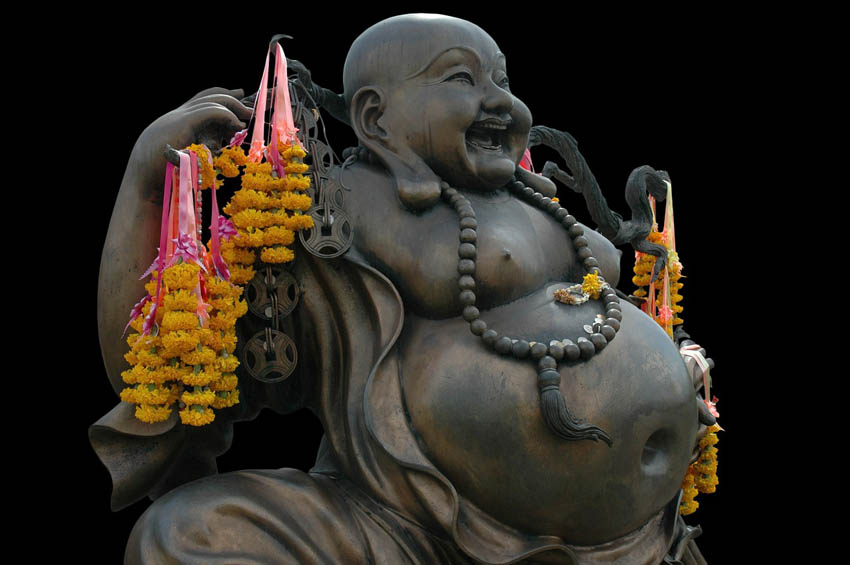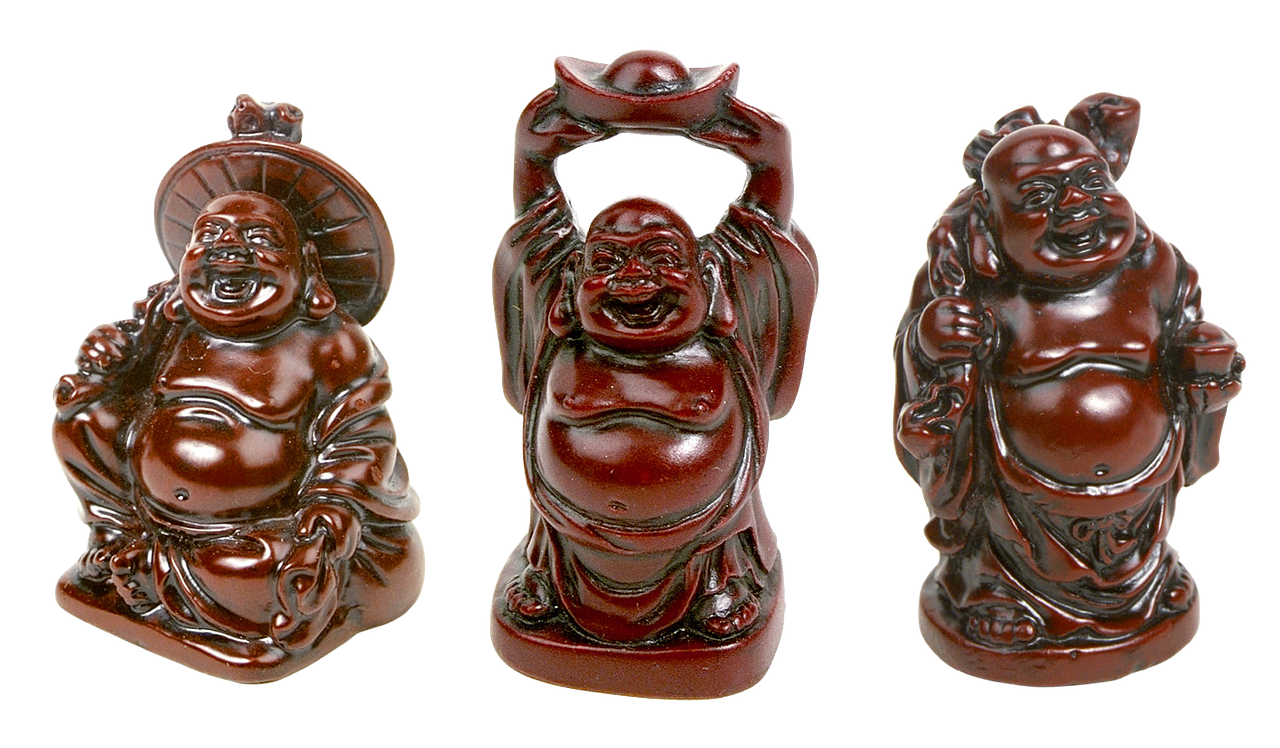It is likely that on more than one occasion we have encountered the image of a fat, smiling and good-natured Buddha, present either in Buddhist temples, restaurants or any other Chinese establishments. This character, whom many people take for the Buddha, is actually Bùdài 布袋, and although his name in English sounds almost identical, it is not the same person at all.
In the West, many people think that Bùdài is the representation that the Chinese make of Buddha, but this is incorrect. The Chinese representations of Sakyamuni Buddha are not very different from the Indian ones: thin constitution, elongated lobes, serene expression, normally sitting in the lotus position, with a point between the eyebrows marking the "third eye" of wisdom, and curly hair finished in the characteristic ushnisha, a kind of pinnacle in the form of a crown on the head. On the other hand, Bùdài is always represented smiling, with a prominent belly, his head shaved, carrying a bulging sack of cloth and often surrounded by children, although the earlobes are also elongated, a symbol of Buddhahood.

It is believed that this legendary character is based on a Chan 禪 monk of the 10th century whose Buddhist name was Qìcǐ 契此. Qìcǐ was a wandering monk from the province of Zhèjiāng 浙江 of whom little is known. It is said that he reached enlightenment under a bridge on a stormy day, and that he wandered from one place to another carrying a bù dài, "cloth sack"; hence his nickname. In China it is also known as Xiào Fó 笑佛, or "laughing buddha".
It seems that Bùdài was an eccentric monk who, without convention, ate meat and drank wine, never feeling the need to reach a great name as a teacher or have disciples. It is also said that he was known by the locals for being able to predict the weather.
Be that as it may, Bùdài is a symbol of happiness, abundance and satisfaction. There is a popular belief that rubbing his belly gives you wealth, prosperity and good luck. He is associated with the Maitreya Buddha, which in China is known as Mílè Fó 彌勒佛. Maitreya is the Buddha of the future, successor to the historical Buddha, who is said to appear on earth to teach the Dharma again. Those who hold the identity of Bùdài as Maitreya find proof for their theory in these verses that Bùdài left written before dying:
彌勒真彌勒
mílè zhēn mílè
Maitreya, the true Maitreya,
化身千百億
huàshēn qiān bǎi yì
has billions of incarnations;
時時示世人
shí shí shì shìrén
He proclaim the truth to the world
時人自不識
shí rén zì bù shí
but people do not recognize him.
The figure of Bùdài is also associated with one of the original followers of Buddha, the arhat Angida, who in China is known as the Luohan Yīnjiē Tuó 因揭陀. Angida was a specialist in catching snakes and removing the poison to prevent them from harming the travelers. He carried a cloth bag where he put the snakes, which he later released in the mountains.
We do not really know what Bùdài carried in his mysterious cloth sack. Possibly it was only his scarce belongings, but there is a legend that says he took sweets and toys out of the sack for the children he habitually surrounded himself with. Like every wandering monk, he begged his food, and his perpetual laughter, born from the satisfaction that comes from the absence of desires, cheered everyone who approached him.
In Japan, Bùdài is known as Hotei and is part of the Seven Gods of Fortune.
From a single bowl, I eat the rice of a thousand families
All alone, I wander ten thousand lǐ*
Those who find favour in my eyes are few
Among white clouds, I seek the TruthPoem attributed to Bùdài
Notes:
* A lǐ is a unit of length whose value has varied throughout history around 500 meters.
 Small figures representing Bùdài.
Small figures representing Bùdài.
